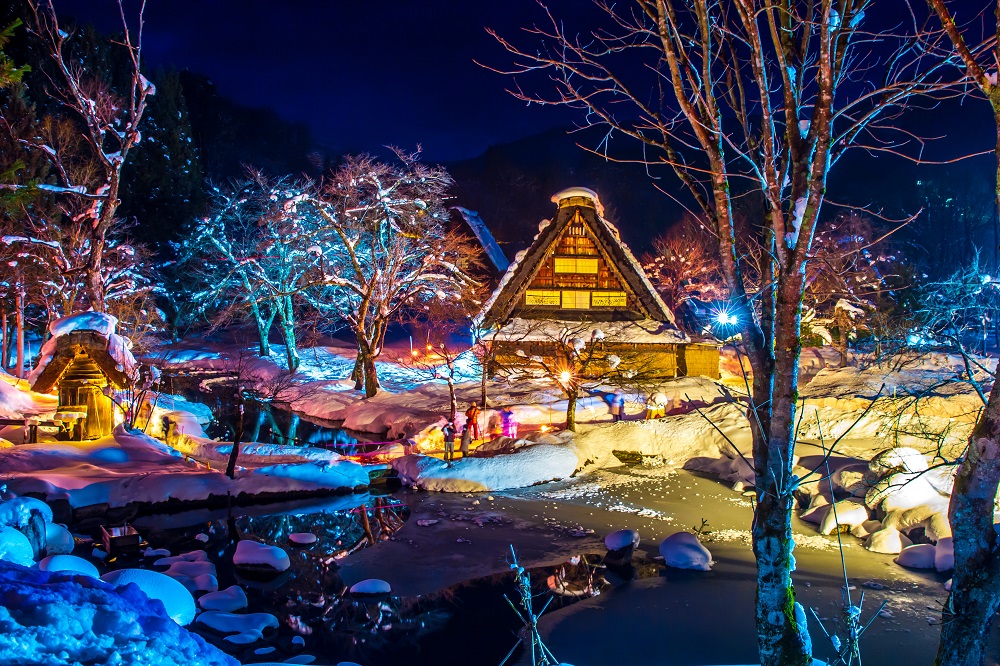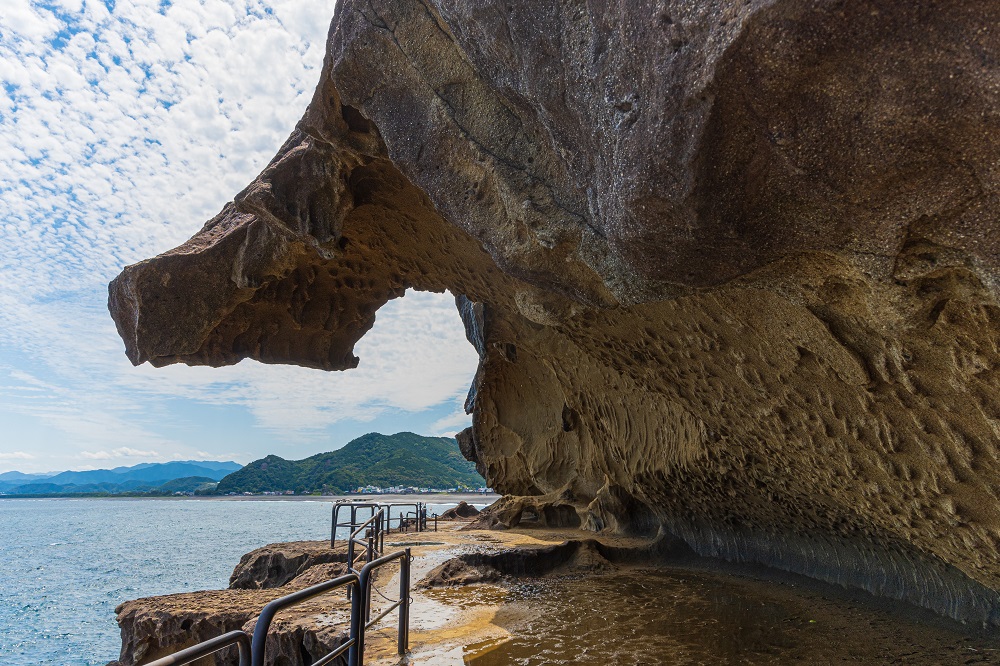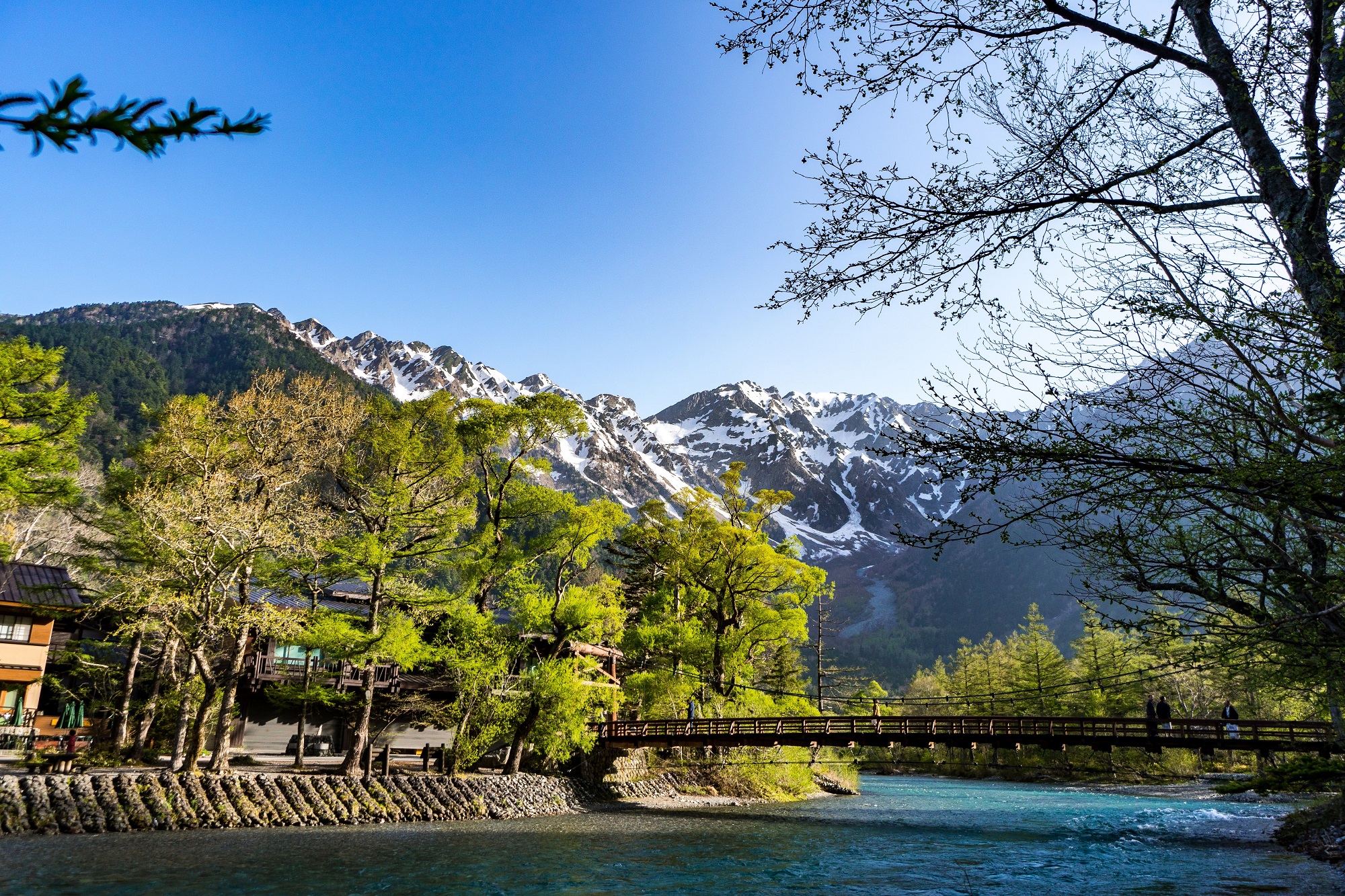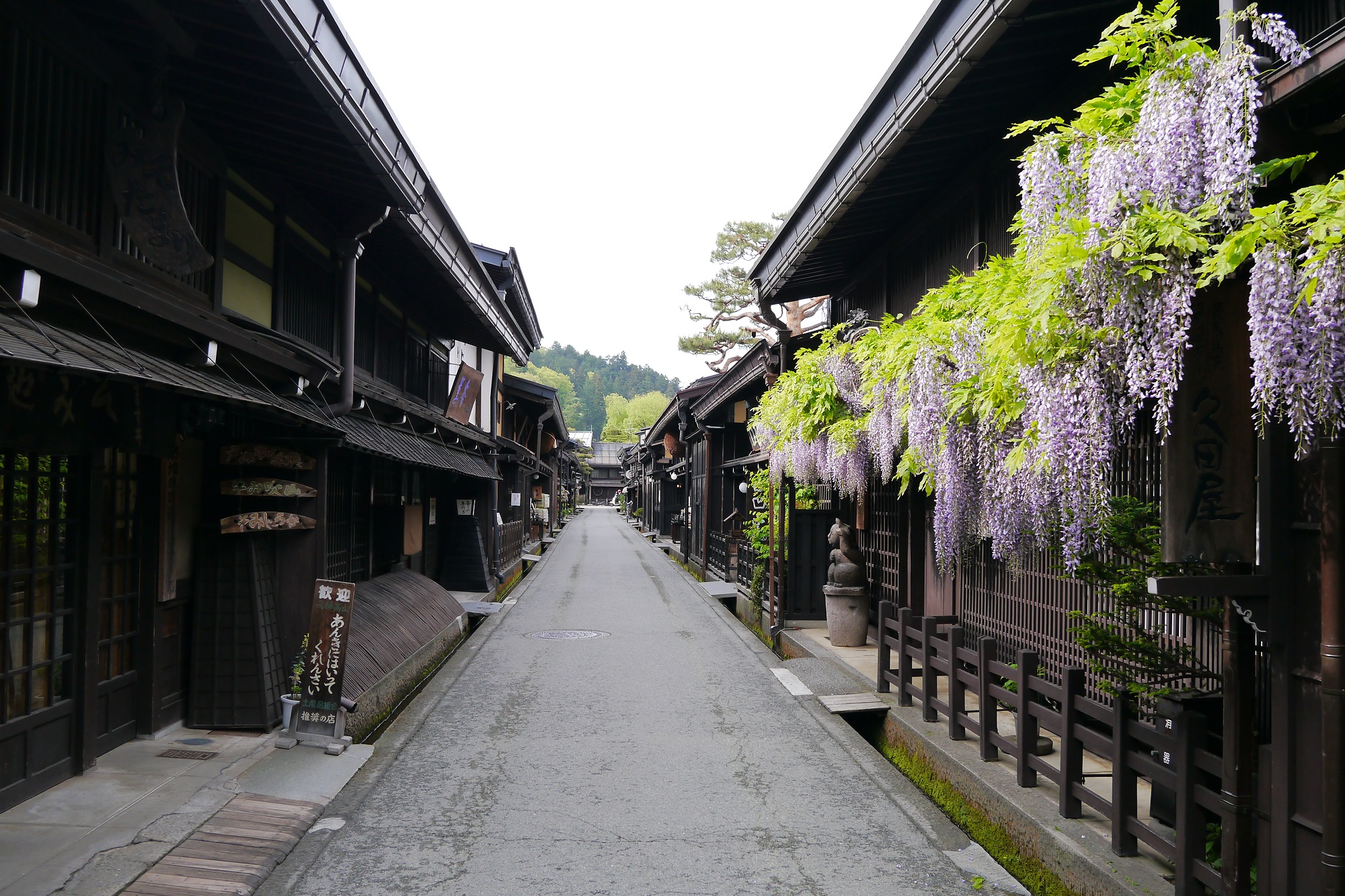Picturesque Scenery / 絶景
Bucket List of Picturesque Sceneries in Japan
Japan is an island nation of about 70% of the land covered in forests, surrounded by the Pacific Ocean and the Sea of Japan. The natural bounties of the seas and mountains, the four distinct seasons and the unique culture come together to produce countless phenomenal views. There are various picturesque sceneries created by geography, natural phenomena, the seasons, the passage of the time, and the long history of Japan. Here are some of the recommendations of the key sites when visiting Japan.

Tips to Enjoy Picturesque Sceneries
Landscapes and stunning views must be preserved for future generations. Carefully protected by the local people and considered sacred in some cases, the breathtaking landscapes are deeply connected to the spiritual culture of the respective regions, making it important to follow locally established rules, along with general rules of staying out of the private and restricted areas, taking trash with you, and not damaging monuments and structures. Be mindful of others, especially when taking photographs, obey traffic rules and do not enter the restricted areas.

Key Picturesque Sceneries in the Chubu Region
Aichi
Korankei Gorge (Toyota City)
Created by the Tomoe River, Korankei Gorge is the most famous place for autumn leaves in the Chubu Region. The maple trees along the gorge were originally planted in 1634 by Sanei (the head priest of the Kojakuji Temple). The entire area from the banks of the stream to the grounds of the temple has been adorned with colorful trees ever since. In November, the leaves of about four thousand maple trees turn red all at once, making for a picturesque view of the gorge, and the "Korankei Maple Festival" is usually held during November and the river is illuminated to reflect the fiery autumn leaves on the surface. This captivating event lasts for one month and is definitely worth your attention. The pale purple dog's tooth violet flowers bloom throughout the gorge will be seen in March, and the trees with the fresh and new leaves will be seen in May, one of the perfect places to enjoy the seasonal changes in Japan.

Shizuoka
Miho no Matsubara (Shizuoka City)
"Miho no Matsubara" is a pine forest stretching along the coastline of the Miho Peninsula with about 30,000 pine trees planted for over 5 Km. The sparkling blue ocean, the verdant green of the pine trees, and the view of Mt. Fuji in the distance make the view truly picturesque. Also, known for the setting for the "Hagoromo [feathered robe] legend”, in which a celestial maiden hung her feathered robe on the branch of a pine tree to take a bath, and a fisherman found the robe and tried to take it home, but the celestial maiden performed a celestial dance for him to get the feathered robe back to return to the heavens. In honor of this, the "Miho Hagoromo Takagi Noh" performance of traditional Japanese Noh drama is held every October. “Miho no Matsubara" is an inscribed property of the “Fujisan, sacred place and source of artistic inspiration”, a World Cultural Heritage Site.

Nagano
Shibu Onsen (Yamanouchi Town, Shimotakai District)
Cobblestone lanes lined with traditional wooden ryokan [traditional Japanese accommodation facility], makes the timeless atmosphere of this quaint old village attractive. Ever since the time the onsen [hot spring] started springing up 1,300 years ago, the village has been prospering thanks to lodging and therapeutic spas. Feel the atmosphere of a Japanese onsen village while strolling the streets in your yukata [light cotton kimono].

Gifu
Shirakawa-go (Shirakawa Village)
Shirakawa-go [Shirakawa Village] is a Japanese mountain settlement once considered as an “isolated island” and referred to as an “unexplored region”, is famous for the houses built in the "Gassho-style" architectural style. "Gassho" literally meaning “praying hands” in Japanese, and the "Gassho-style" architectural style refers to the steeply slanted triangular roofs resembling the two hands pressed together in a prayer. When moist air from the sea repeatedly collides with the mountains, it brings heavy snowfall to the valley from late November to March. This makes the region one of the snowiest in the country, with snow accumulation sometimes reaching as high as an adult. The thatched roofs are specially illuminated at night around the time when covered in dense snow, for a breathtakingly beautiful shimmery silver world. In March, the snow begins to melt, and by late April, the peaceful scenery of cherry blossoms, mountain greenery, and straw-thatched roofs soothes the hearts. In summer, the rice paddies, fields and mountain trees turn to a powerful green, and in autumn, the winds sway the reddish leaves and the golden ears of rice. Enjoy the experience of the culture and traditions that live on in Shirakawa-go today.
Click here for more on Shirakawa-go

Mie
Onigajo (Kumano City)
Onigajo ["Demon's Castle"], a part of the World Heritage Site "Sacred Sites and Pilgrimage Routes in the Kii Mountain Range", is a work of art created by nature through geological protrusion, erosion and weathering, is a cliff that continues for 1.2Km along the Kumanonada Sea. Onigajo is a Natural Monument and is designated as a Scenic Spot in Japan. On the top of the cliffs, there are castle ruins dating back to the Sengoku Period, and a hiking path is made to connect Kumanokodo and Matsumoto-toge Pass. The entire Kumanonada Sea is seen from the observation deck called the "Demon's Lookout Point". There are four types of cherry trees planted along the hiking path leading to the top of the cliff, and in spring, the cherry blossoms bloom one after another for a long period of time. One of the most impressive features is the area known as "Senjojiki", a large cave said to be the size of a thousand tatami mats. The flat bottom, towering wave-like diagonal rock wall, and open view of the sea create a stunning natural amphitheater. From the Onigajo Center, take a walk for about 1Km along the coastal trail to the west entrance of the Onigajo. The path is extremely narrow, and the footholds are bad in some parts, so, be careful when visiting.
Click here for more on Kumano City

Shiga
Biwako Terrace (Otsu City)
Located in Shiga Prefecture, Lake Biwa is both the largest freshwater and the oldest lake in Japan, with a long history for about 4 million years, and is one of 20 ancient lakes in the world. Biwako Terrace is a terrace located in Biwako Valley, 1,100 meters above sea level and about 5 minutes ropeway ride from the foot of the mountain. A marvelous sea of clouds might be expected due to the elevation difference. Both the Grand and the North spacious wooden terraces are at your service to enjoy the spectacular view of Lake Biwa stretched out below. The difference in elevation may cause sea of the clouds.
Click here for more on Lake Biwa

Fukui
Echizen Ono Castle (Ono City)
Echizen Ono Castle stands atop Mt. Kameyama, in the Ono basin located northwest of Ono City. The castle was built over a period of five years from around 1575 and the castle town known as "the Little Kyoto of the Hokuriku Region" has developed with the grid plan just like the old capital Kyoto and has prospered as the center of the Oku-Echizen Region since then. The Echizen Ono Castle, located in the Ono Basin, is surrounded by mountains from all sides. At early winter morning hours, when the conditions are just right, a sea of clouds form, and if lucky, the castle floating in the sea of clouds my be seen.
Closed: December 1-March 31.

Ishikawa
Shiroyone Senmaida Rice Terraces (Wajima City)
The area of terraced rice paddies located on a steep slope in Shiroyone Town in the eastern part of Wajima City (Ishikawa Prefecture), is the “Shiroyone Senmaida Rice Terraces”. Located on the northern side of the Noto Peninsula, on a steep slope facing the Sea of Japan, with numerous rice paddies appears to be stacked up on each other forming a landscape
adored by every season in a distinct way. In spring, when the planting season starts, the water is freshly brought into the rice paddies reflecting the blue sky above. In summer, the healthy and vigorous growth of rice plants changes the area into vivid green, turning to gold as the ears of rice maturing in autumn. In winter, 21,000 LEDs light up the pure white terraces blanketed in snow.
Click here for more on Shiroyone Senmaida Rice Terraces

Toyama
Snow Wall (Tateyama Kurobe Alpine Route)
The Tateyama Kurobe Alpine Route is one of the premier mountain tourism routes in the world, stretching 37.2Km through the Northen Japan Alps with the 3,000 meter-high-peaks connecting Toyama and Nagano Prefectures. The route features a number of scenic spots, including the “Snow Wall” - a huge wall of snow created when clearing the road passing through the "Otani". The wall is formed in the vicinity of Murodo every year from April to June and may reach up to 20 meters high. Take a walk on the "Yuki-no-Otani Walk" [Snow Wall Walk] - a 500 meter long "Snow Wall" for exceptional experience.
Click here for more on the Tateyama Kurobe Alpine Route

Destinations
Fujisan [Mt. Fuji] / 富士山 (Shizuoka)
Mt. Fuji, the emblem of Japan, is also its tallest mountain. The majestic 3,776-meter-high mountain with its past of frequent and violent eruptions has long been an object of reverence and faith for m....
Togakushi / 戸隠 (Nagano)
Togakushi is located in the northwestern part of Nagano City and was once visited by many ascetic practitioners as a sacred site. The area is designated as Myoko-Togakushi renzan National Park, where ....
Kamikochi / 上高地 (Nagano)
Kamikochi is located in the west of Nagano Prefecture, on the border with Gifu Prefecture, at an altitude of about 1,500 meters. Although 1.2 million people visit every year, Kamikochi retains much of....
Hida Takayama / 飛騨高山 (Gifu)
The central area of Takayama City is called "Old Town" and is also known as "Hida's Little Kyoto" due to its well-preserved castle town and merchant town, including restaurants and souvenir stores con....
Shirakawa-go / 白川郷 (Gifu)
Renowned for its gassho style and unique buildings perfect for the local climate, Shirakawa-go and Gokayama Gassho style Village were designated as an Important Preservation District for Groups of Tra....
Ise Jingu / 伊勢神宮 (Mie)
During the Edo Period (1600-1868), it became popular for people to partake in “okage mairi” processions, during which large groups of people flocked to worship together at Ise Jingu Shrine. During thi....
Kumano Kodo / 熊野古道 (Mie)
The Kii Mountain Range is home to the three sacred sites of Kumano Sanzan (Three Kumano Shrines), Koyasan (Mt. Koya), and Yoshino-and-Omine, which have nurtured various forms of faith, including Shint....
Biwako [Lake Biwa] / 琵琶湖 (Shiga)
The pride of Shiga Prefecture, Lake Biwa, is the largest freshwater lake in Japan. It is also the oldest lake in the country with a history dating back as far as four million years, and is one of the ....
Tojinbo Cliffs / 東尋坊 (Fukui)
Tojinbo Cliff is the most famous tourist attraction in Fukui Prefecture. The huge, vertical, pillar-shaped rocks cluster along the coastline for about a kilometer, an arresting view. The sight of the ....
Kenroku-en / 兼六園 (Ishikawa)
Kenrokuen is one of the three most famous gardens in Japan, alongside Okayama Korakuen in Okayama City, Okayama Prefecture, and Mito Kairakuen in Mito City, Ibaraki Prefecture. As one of the most famo....
Wajima / 輪島 (Ishikawa)
Located in the northwest of Noto Peninsula, Wajima City in Ishikawa Prefecture has a population of about 30,000 and is blessed with abundant nature and the sea. Wajima is most famous for its Shiroyone....
“Shiroyone Senmaida” Rice Terraces / 白米千枚田 (Ishikawa)
Shiroyone Senmaida is a series of terraced rice fields located on a steep slope in the town of Shiroyone in the east of Wajima City, Ishikawa Prefecture. Terraced rice paddies are built in a stepped p....
Gokayama / 五箇山 (Toyama)
Gokayama is a region of forty small villages nestled in abundant nature in Nanto City, Toyama Prefecture, famous for its houses built in the gassho-style, which represent Japan's wooden culture. In 19....
Kurobe Gorge / 黒部峡谷 (Toyama)
Kurobe Gorge in Toyama Prefecture is one of the most famous V-shaped gorges listed in the "Three Great Valleys" and the "100 Best Unexplored Areas" in Japan. It spans a total length of 86 km and an el....














